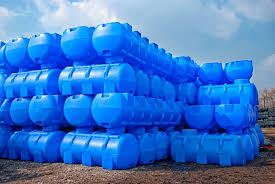Rotomolding or rotational molding, is a versatile and efficient manufacturing process used to create hollow plastic components. This process is particularly appreciated because of its capacity to create intricate shapes that have a smooth surface, and it is widely employed in a variety of industries, such as marine, automotive, toys, and storage solutions. Here’s a comprehensive guide to knowing more about the rotomolding process and the applications it has.
The Rotomolding Process
Rotomolding involves a number of steps to produce plastic parts. The process starts by placing the powdered plastic material in an empty mold. This mold then gets heated, and moved around several axes. As the mold warms the plastic powder melts and then coats the inside surface of the mold. Continuous rotation assures an even distribution of the melted plastic, leading to a uniform wall thickness.
After the heating process, the mold is cooled while it is still spinning. The cooling process is what solidifies the plastic, forming the final product. Once the mold reaches a suitable temperature, it can be open to take off the completed piece. This method allows for the creation of huge seamless, seamless parts with intricate geometries, which are difficult to make with other techniques for molding.
Advantages of Rotomolding
Flexible Design: Rotomolding excels at creating complex and intricate designs. The process allows for the production of hollow parts that have different wall thicknesses, as well as integrated features like bosses and ribs.
Cost-effective: In comparison with other molding methods, rotomolding can be more cost-effective, particularly when it comes to low-to medium-volume production runs. The molds used in rotomolding generally cost less than the molds required for blow molding or injection molding.
Durability: Products produced by the process of rotomolding are renowned for their toughness and resistance to impact and environmental stress. The process creates parts with uniform thickness of the wall, which increases their strength and longevity.
Low waste: The rotomolding procedure generates minimal material waste since the excess plastic can often be recycled. This makes it an environmentally friendly option compared to other manufacturing methods.
Applications
Rotomolding is used to create various kinds of products. In the automobile industry, it’s used for producing fuel tanks and bumper parts. In the toy business, it enables the creation of durable, colorful toys. It is also prevalent in the production of outdoor gear, like kayaks and storage tanks, because of its ability to make huge, hollow parts that have robust qualities.
Conclusion
Rotomolding provides a distinct set of advantages for manufacturing hollow plastic components, ranging from design flexibility and cost-effectiveness to the durability and minimal waste. The ability to create quality, intricate parts is a preferred option for a variety of industries. Understanding the rotomolding process can help manufacturers make informed decisions and leverage its benefits in a variety of applications.
